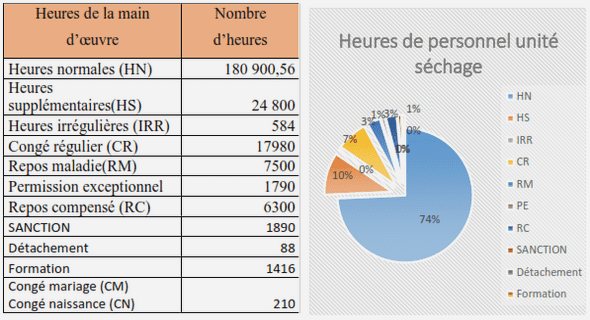Nombre de téléchargements - 1
Vous avez une question, contacter notre assistance par E-mail : admin@clicours.com
Table des matières
INTRODUCTION
PARTIE I : IDENTIFICATION DU PROJET
CHAPITRE I : PRESENTATION DU PROJET
1.1-Histoire de la pomme de terre
1.2-Historique du projet
Section 2 : Description du projet
2.1-Nature du projet
CHAPITRE II : RENSEIGNEMENTS GENERAUX SUR LE PROJET
Section 1 : Localisation
1.1-Emplacement
1.2-Raison du choix
Section 2 : Produit
2.1-Caractéristique de la pomme de terre
2.2 Consommation
CHAPITRE 3 : ETUDE DE MARCHE
Section 1: Etude de la demande
11-Identification du marché
1.2-Client potentiel
Section 2 : Etude l’offre
2.1-Type de produit à offrir
2.2-Etude de la concurrence
Section 3 : Politique et stratégie marketing à adopter
3.1-Marketing Mix
3.2-Stratégie Pull
CHAPITRE IV : THEORIE GENERALE SUR LES OUTILS ET CRITERES D’EVALUATION
Section 1 : Outils d’évaluation
1.1-Valeur actualisée nette
a-Définition
b-Formule
c-Interprétation
1.2-Taux de rentabilité interne
a-Définition
b-Formule
c-Interprétation
1.3-Délai de récupération des capitaux investis
a-Définition
b-Interprétation
1.3-Indice de profitabilité
a-Définition
b-Formule
c-Interprétation
Section 2 : Critère d’évaluation
2.1-Pertinence
2.2-Efficacité
1.3-Efficience
1.4-Durée de vie du projet
PARTIE II : ETUDE TECHNIQUE
CHAPITRE 1 : TECHNIQUE DE PRODUCTION
Section 1: Description de l’environnement
1.1-Milieu physique
1.2-Milieu biotique
1.3-Milieu humain
Section 2 : Technique de production
2.1-Technique de réalisation
2.2-Identification des matériels
2.3-Intrants
Section 3 : Capacité de production
3.1-Aspect qualitatif
3.2-Planning de production
CHAPITRE 2 : ETUDE ORGANISATIONNELLE
Section 1 : Type d’organisation
1.1-Organigramme
1.2-Personnel et organisation
Section 2 : Plan d’organisation
2.1 Mise en oeuvre
2.2-Chronogramme
Partie III : ETUDE FINANCIERE DU PROJET
CHAPITRE 1 : ETUDE ECONOMIQUE ET FINANCIERE
Section 1 Investissement
Fond de roulement initial
Section 2: Tableau des amortissements
Section 4 : Plan de financement
Section 4 : Tableau de remboursement
Section 5 : Compte gestion
CHAPITRE 2 : ETUDE DE FAISABILITE
Section 1 : Compte de résultat prévisionnel
Section 2 : Plan de trésorerie prévisionnelle
Section 4 : Bilan
PARTIE IV : EVALUATION DU PROJET
CHAPITRE 1 : EVALUATION ECONOMIQUE
Section 1 : Création d’emploi
Section 2 : Création de la valeur ajoutée
CHAPITRE 2 : EVALUATION FINANCIERE
Section 1 : Outils d’évaluation
1.1 Valeur actualisée nette
1.2-Taux de rentabilité interne
1.2-Délais de récupération du capital investi
1.4 Indice de profitabilité
Section 2 : Critère d’évaluation
2.1-Pertinence
2.2-Efficience
2.3-Durée de vie du projet
2.4- Impact du projet
CHAPITRE 3 : EVALUATION SOCIALE
Section 1 : Réduction de la pauvreté en milieu rural
Section 2 : Amélioration de la qualité alimentaire
CONCLUSION GENERALE
ANNEXES
BIBLIOGRAPHIE
